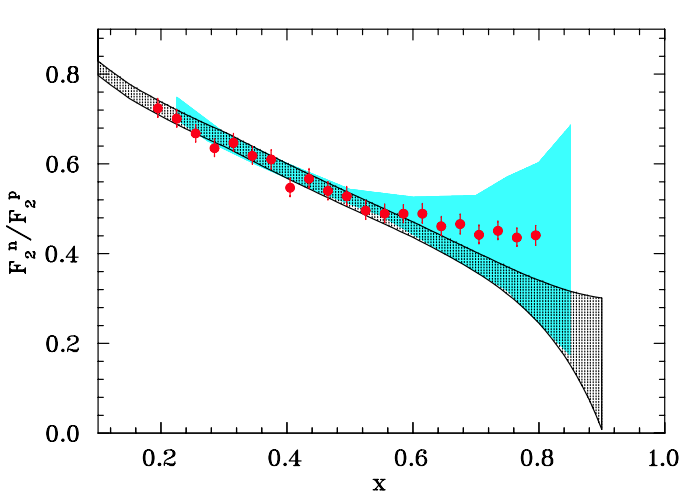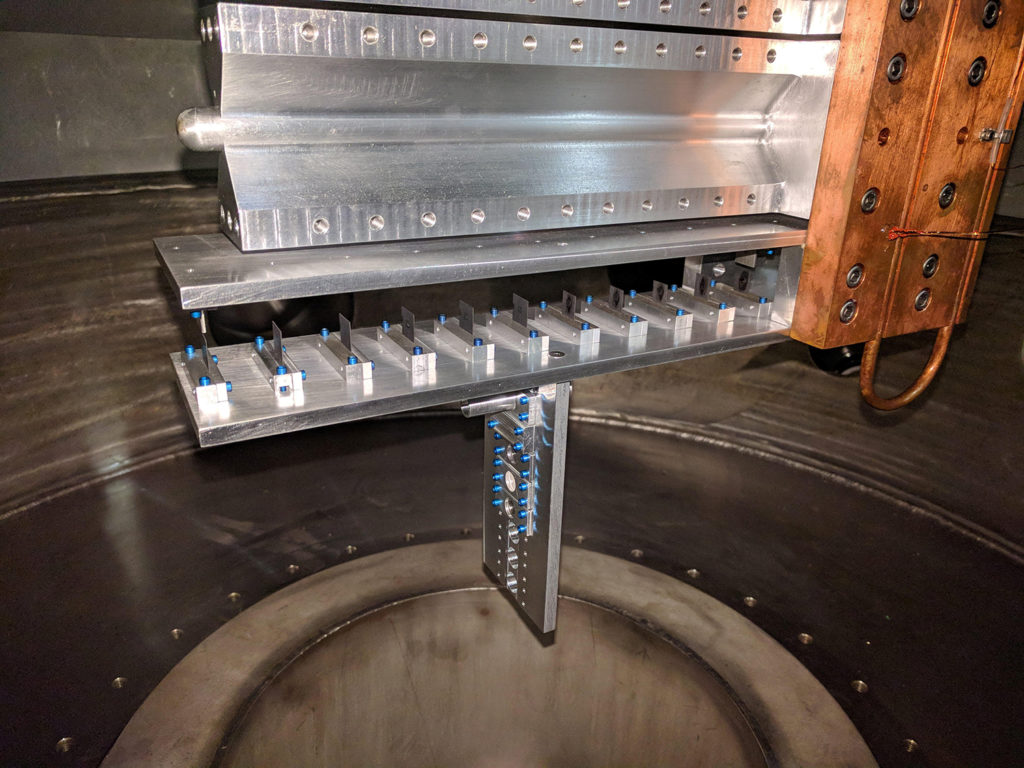A great deal is known about the quark structure of nucleons (protons and neutrons), yet key questions remain. Of particular importance is understanding the difference between the up- and down-quark contribution. The difference between up and down quarks manifests itself in the difference between the proton (u-u-d) and neutron (u-d-d) structure. However, measurements of neutrons are challenging as free neutrons are not stable. Much of our information on the neutron comes from scattering measurements on the deuteron – a nucleus composed of one proton and one neutron. This requires subtracting the dominant proton contribution, correcting for the motion of nucleons in the nucleus, and accounting for the possibility that the nucleon structure changes inside of the nucleus, making such extractions less reliable than a direct measurement would be.
However, just as the u-d difference can be measured through p-n comparisons, the p-n difference can be studied by comparing the mirror nuclei 3H (p-n-n) and 3He (p-p-n). In this case, the nucleon motion and nucleon modification should be larger than in the deuteron but nearly identical in both nuclei. An experimental comparison is thus a significantly more reliable indicator of the basic difference between up and down quark contributions to the structure and dynamics of nucleons.
The MARATHON experiment at the Thomas Jefferson National Accelerator Facility (JLAB) measured deep inelastic scattering from 3H and 3He to extract the ratio of the neutron-to-proton quark distributions.

Figure 1 shows the neutron/proton ratio as a function of the nucleon momentum carried by the struck quark (x). The uncertainties are significantly smaller than the previous work, such as the cyan band which shows the range of results from extractions based on the deuteron data (using different models for the momentum distribution and nucleon modification). The dark shaded band shows the deuteron results excluding models that allow for nucleon modification. The MARATHON data which are shown in Figure 1 require nucleon modification to explain the data at large x; a first ever confirmation that the proton and neutron in deuterium are modified from their free state. And, the MARATHON data delivers a significantly more precise extraction of the true n/p ratio. Immediately after the release of the MARATHON data, two preprints using these data to test proton modification were posted to the arXiv.
Shujie Li and John Arrington led the commissioning effort for the set of four experiments that which will use the new tritium target at Jefferson Lab. John is the Co-Spokesperson for MARATHON.
[1] D. Abrams, et al., arXiv:2104.05850 (submitted to PRL).
[2] J. Arrington, J. G. Rubin, and W. Melnitchouk, Phys. Rev. Lett. 108 (2012) 252001
